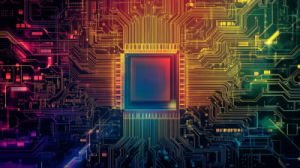Blog Credit: Priyanka Rana
Introduction
In an era where technology blurs the line between fact and fiction, the rise of deepfakes has raised serious concerns about the authenticity of digital media. Deepfakes are AI-generated manipulations that convincingly alter audio and video content, leading to potential misinformation and distrust. In this comprehensive guide, we’ll delve into the world of deepfakes, exploring their implications, understanding their detection, and unveiling strategies for prevention.
What are Deepfakes?
Deepfakes are a product of deep learning algorithms that analyze and mimic human facial expressions, voice patterns, and gestures. This technology can create hyper-realistic videos that make individuals appear to say or do things they never did in reality. With deepfakes, the boundaries between truth and falsehood become increasingly blurred, posing challenges to media credibility and trust.
The Threat of Deepfakes: Implications and Concerns
The rise of deepfakes presents a range of potential dangers:
- Misinformation: Deepfakes can be used to create fabricated content that appears genuine, leading to the spread of false information and rumors.
- Privacy Violations: Individuals can be targeted by deepfake creators, compromising their privacy and personal data.
- Reputation Damage: Celebrities, politicians, and public figures may fall victim to deepfakes that tarnish their reputation by placing them in compromising situations.
- Manipulation of Truth: The credibility of audio and video evidence is at risk, potentially undermining legal proceedings and public trust.
Detecting Deepfakes: Signs and Strategies
- Facial and Vocal Inconsistencies: Deepfake videos often show misaligned facial expressions and lip sync. Listen for audio that doesn’t match facial movements.
- Unnatural Movements: Observe for unusual eye blinking, unnatural head tilts, or jerky movements that suggest AI manipulation.
- Background Irregularities: Deepfakes might feature inconsistencies in the background or lighting due to the nature of AI synthesis.
Tools and Technologies for Detection
- Machine Learning Models: AI-powered algorithms can analyze microexpressions and identify irregularities that indicate a deepfake.
- Blockchain Timestamping: Blockchain technology can be employed to timestamp media files, ensuring their authenticity and integrity.
Preventing Deepfake Threats: Education and Security Measures
- Media Literacy: Educate individuals about the existence and implications of deepfakes, enabling them to critically evaluate content.
- Multi-Factor Authentication (MFA): Implement MFA for sensitive systems to prevent unauthorized access to personal data.
- Authentication Protocols: Develop and enforce strong authentication protocols for access to critical systems.
Conclusion: Safeguarding Truth in a Digital Age
As deepfake technology continues to advance, the need for vigilance and preparedness is more crucial than ever. By staying informed, embracing media literacy, and implementing robust security measures, we can collectively combat the threat of deepfakes and ensure that truth prevails in our interconnected digital world.
Unmask the truth behind deepfakes. Learn how to detect and prevent their spread in this comprehensive guide.

28
AugDeepfakes Detection
Aug 28, 2023Recent Blog
The ITES-QApr 17, 2025
The UPI Circle Of PhonePeApr 16, 2025
Dangerous AI In HealthcareApr 15, 2025
Google’s Iron Wood ChipApr 14, 2025
World’s First 3D Printed Train StationApr 11, 2025




